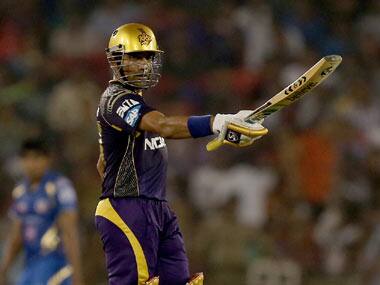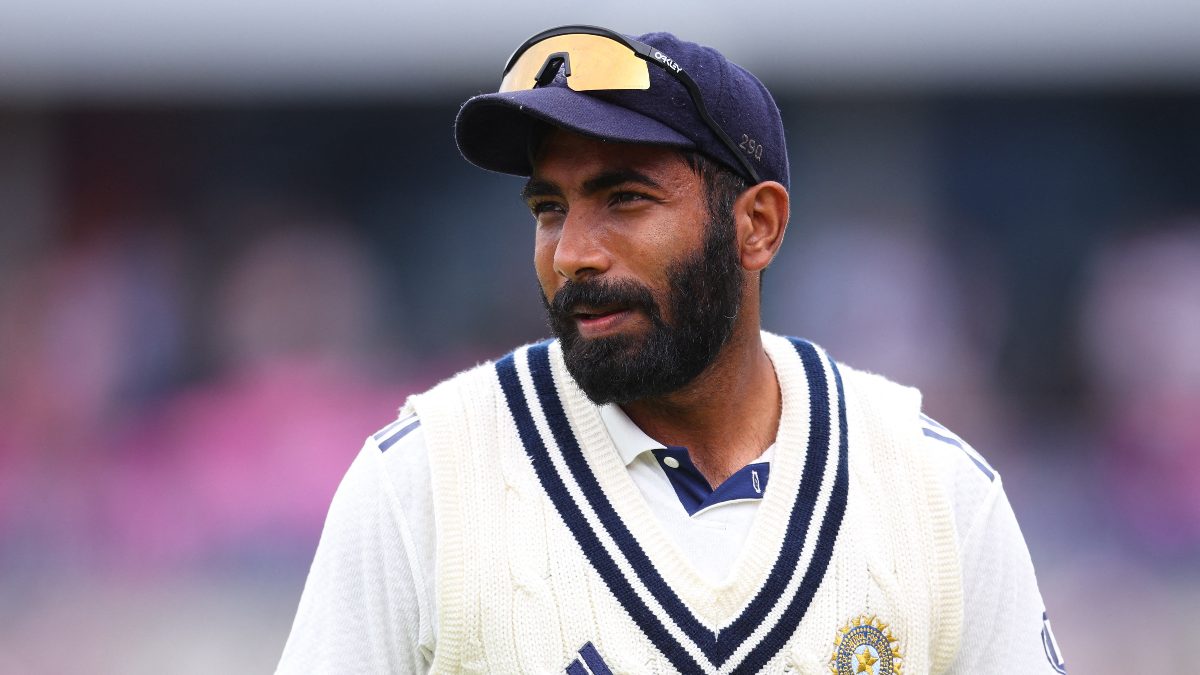The group stage of IPL 7 has finally come to an end and the four teams to qualify for the playoffs are Kings XI Punjab, Kolkata Knight Riders, Chennai Super Kings and Mumbai Indians. There was a tough fight for the fourth spot and finally Mumbai Indians grabbed it with a thrilling win over Rajasthan Royals in the last match of the group stages. KXIP and CSK dominated the UAE leg but the other teams bounced back in the Indian leg. Here are the things we learnt from the group stages. Robin Uthappa was the most improved batsman It was Glenn Maxwell who took IPL 7 by storm with some blistering innings in the UAE and it was just the Maxwell show up till the halfway stage. But then, Kolkata Knight Riders decided to promote Uthappa to open the batting and it was the Uthappa show from then on. Uthappa was floated down the order in the first five games, he batted at number four, five and even seven. He scored just 97 runs from five innings at 19.4. Then, the KKR team management realised that Uthappa was effective up the order and promoted him to open. In the next nine innings his scores read - 47, 65, 47, 46, 80, 40, 67, 83* and 41. That’s 516 runs at an average of 64.5. He whizzed past Maxwell to don the orange cap with 613 runs from 14 innings at 47.15 and a healthy strike rate of 137.44. If Maxwell’s innings were brutal, Uthappa’s innings have been pure melody. Delhi Daredevils plotted their own downfall Nothing seems to have changed for DD from last season; in fact it’s got even worse for them. They at least managed to win three matches last time around but this time around they finished with just two. [caption id=“attachment_1543129” align=“alignleft” width=“380”]  If Maxwell’s innings were brutal, Uthappa’s innings have been pure melody. BCCI[/caption] They were masters of their own downfall and never learnt from their mistakes. DD’s major weakness was their bowling. They didn’t boast of a superstar in their bowling line-up, all their hopes were on the batsmen to deliver. Their main batsmen, Kevin Pietersen and Dinesh Karthik, flopped big time.Their in-form batsmen were JP Duminy and Kedar Jadhav, the two batsmen got them out of hole on a number of occasions. But they still weren’t pushed up the batting order. They were constantly played at no. 5 and 6 respectively. Duminy ended up as their highest run-getter (402 from 12 inns at 57.42, SR 135.35) and Jadhav finished with second best average and best strike rate for DD (149 runs from 9 inns at 37.25, SR 153.60) If only, both batsmen had more time out in the middle. Brave decisions behind KKR’s renaissance At one point this season, Kolkata Knight Riders were reeling – they had lost five of their seven matches and even though it was early in the season, it looked like they had already blown their chance of making the playoffs. But just when it seemed like there was no rescuing them, they rose from the ashes and scripted an amazing turnaround with seven consecutive wins. They not only qualified for the playoffs but also sealed the second spot. Most of the credit goes to the team management; they spotted the weak areas and followed up with some brave decisions which played a major part in the turnaround – they dropped Jacques Kallis, Shakib Al Hasan got a chance to play and stuck with Yusuf Pathan. Players need to follow certain code of conduct The tournament saw some ugly, uncalled for scenes. Kieron Pollard hurled a bat towards Mitchell Starc in anger, Gambhir swore multiple times after being wrongly given out against SRH by umpire Nigel Llong, Steyn vent his frustrations out on Uthappa as he shoved him off while the latter was attempting a run. The KKR opener had flicked Steyn for an effortless six after being dropped by Shikhar Dhawan off Steyn. It was needless; Uthappa maintained his cool and didn’t even speak a word to Steyn.
Tempers do flare in sports but they need to be kept in control. The players went overboard during these instances. They need to realise that this is a bad advertisement for the game and follow a certain code of conduct. Steyn needs to improve his death bowling Steyn is a world class bowler, there is no doubt, but this edition of IPL has exposed a chink in his armour. His death bowling has been really poor. He has been carted around at 9.41 runs per over in the last five overs in this IPL. The problem is that he hasn’t got his lengths right, the attempted yorkers have turned out to be half-volleys and overpitched deliveries. Steyn to AB De Villiers - 22 Runs (RCB vs SRH in Bangalore, 24 runs overall) Steyn to George Bailey - 21 Runs (SRH vs KXIP IN Hyderabad, 22 runs overall) Steyn to MS Dhoni - 24 Runs (CSK V SRH in Ranchi) Steyn to Yusuf Pathan - 26 Runs (KKR vs SRH in Kolkata) He’s been hit for over 20 runs in an over four times at the death in this tournament and majority of the times it has proved to be the turning point for the opposition. India has a lot of talented leg-spinners After a good outing in World T20, all eyes were on Amit Mishra before the start of the IPL. But the ones who hogged the limelight were the uncapped leg-spinners. In the latter stages of the tournament, Karn Sharma was preferred ahead of Mishra by SRH. He ended up as their second-highest wicket-taker - 15 wickets. RCB had a dismal outing but Yuzvendra Chahal ended with the best economy rate for RCB (7.09). The 42-year-old Pravin Tambe scalped a hat-trick against KKR and was the highest wicket-taker (15) for RR. Rookies like Shreyas Gopal of Mumbai Indians, Rahul Tewatia of RR and Karanveer Singh of KXIP impressed with their flight and drift too. Selecting Dinda is suicidal RCB selected Ashok Dinda for nine matches but why they did that is beyond anyone’s comprehension. His figures read - 31 overs 270 runs conceded, five wickets taken at an average of 54 and economy rate of 8.70. Kohli kept on selecting him and even worse – kept bowling him at the death. His economy rate in the last five overs was an appalling 12.6 in the tournament. It was a gala time for the batsmen and they should thank the RCB team management for such early Christmas presents.
Here’s how the teams have fared over years with Dinda in their ranks. 2008 - KKR - 6 2009 - KKR - 8 (last) 2010 - KKR - 6 2011 - DD - 10 (last) 2012 - PWI - 9 (last) 2013 - PWI - 8 2014: RCB - 7 Virat Kohli looked bogged down by captaincy Virat Kohli was in form of his life before the IPL 7 commenced. But suddenly his form dipped. He averaged just 18 in first nine matches which included three ducks. With every lost match, he looked frustrated which was clearly visibly from television pictures. He struck form in latter half but it was too little too late. As a skipper too he made some mind-boggling decisions, selecting Dinda consistently and bowling him at the death, selecting a half-fit Gayle who flopped throughout. Vijay Zol should have been given more chances, he played just three matches. All in all, Kohli looked a bit bogged down by captaincy which not only affected his form but also the entire unit. Rajasthan Royals’ bewildering experiments cost them dearly Just a week ago, Rajsthan Royals were sitting pretty at third position in the table with one win needed from three games to qualify for playoffs. But then, disaster in the form of experiments struck, against MI in Motera, for some unfathomable reasons, they made four changes, Ajinkya Rahane (who it later emerged was inujred), Pravin Tambe, Steven Smith and Ben Cutting were replaced by Unmukt Chand, Ankit Sharma, Brad Hodge and the skipper himself Shane Watson. RR hadn’t even qualified for the playoffs, so why not take the safety first route? MI brought in an extra spinner, debutant Shreyas Gopal, which made it three spinners including Harbhajan Singh, Pragyan Ojha, on a track conducive to spin bowling and RR left out Tambe. Hodge was brought into the side in place of Smith and then sent in at no. 8 for batting. What’s the use of sending him at no.8? They lost the match. Rajat Bhatia had a poor outing against MI but on most days you would trust the wily medium pacer to deliver the goods as he has done over the years. He was dropped in the next match against KXIP. With 110 runs needed off 53 balls, rookie Rahul Tewatia was sent in ahead of Brad Hodge, he flopped, Hodge hit 31 off 18 but it was too little too late. They messed up with their batting order big time. Faulkner too should have been promoted up the order given the fact that if he gets in more balls, he can destroy the opposition. They lost the match again and with MI peaking at the right time, they were in a do-or-die situation needing to win their last match. In the last match, too, they experimented with their batting order. Watson opened the batting along with Samson, where as in the previous game, Rahane opened with Karun. Watson managed 8 from 18 balls. They realised their mistake and sent Hodge and Faulkner early, at 4 and 5 respectively. But in the end, MI pulled off a coup and qualified for the play-offs. RR had only had themselves to blame for this experimentations and laid-back attitude. MI showed that impossible is nothing MI had a horror start to the season, five losses in the first five games in the UAE leg. They were lacklustre, boring and terrible to watch. Nothing went right for them. But they scripted a dramatic turnaround in the Indian leg. With 6 wins from 8 matches they brought the equation down to the last match which in itself was an achievement. The equation was difficult: they needed 190 to win from 14.3 overs to qualify for the playoffs on net run-rate. Anderson played a blinder (95 off 44), the equation came down to four or a six off one ball and Tare sealed the playoff spot with a six. It was one of the most insane matches one would ever witness. From five out of five losses at the start, to qualifying for the playoffs, it was an amazing journey for MI.


)

)
)
)
)
)
)
)
)



